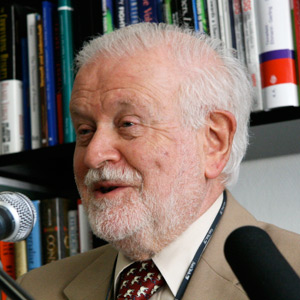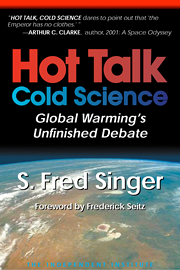International climate negotiations collapsed in December 2009 in Copenhagen (soon dubbed “Flopnhagen”)—and the just-completed round in Cancun, Mexico, achieved little. Basically, the public no longer trusts the science being dispensed by the United Nations. Also, major developing countries, including China and India, refuse to sacrifice economic growth for an uncertain goal.
Yet, in most policy discussions—and in Al Gore’s movie—it is still assumed, without question, that the warming trend, since about 1900, is human-caused. But there is no good evidence to support this belief except constant repetition of the mantra “The science is settled.” The summary of the 2007 report of the U.N. Intergovernmental Panel on Climate Change (IPCC) claims as its key conclusion: “Most of the observed increase in global averaged temperatures since the mid-20th century is very likely due to the observed increase in anthropogenic greenhouse gas concentrations.” But the evidence they present is not at all convincing—and indeed, there is contrary evidence that the IPCC cavalierly ignores. The claimed reality of man-made or anthropogenic global warming (AGW) is of obvious importance and is key to any policy of climate mitigation.
A commonly cited “proof” for AGW claims there is a “scientific consensus”—based mainly on a flawed study by University of California science historian Naomi Oreskes, published in the journal Science in December 2004. However, a 2003 poll by German researchers of 530 climatologists in 27 countries showed just 34.7 percent endorsing the AGW hypothesis, while 20.5 percent rejected it—with the rest undecided. In a 2006 survey of 793 members by the National Registry of Environmental Professionals, 41 percent disagreed that recent warming “can be, in large part, attributed to human activity.” There are statements from scientific groups and professional societies on both sides of the issue.
But even if a majority of scientists had voted for AGW, that’s not how science works. Unlike in politics, the majority does not rule. In fact, every advance in science has come from a minority that found that observed facts contradicted the prevailing hypothesis. Sometimes it took only one scientist; think of Galileo or Einstein.
Another so-called “proof” for AGW: Glaciers are melting and Arctic sea ice is disappearing. But this is a necessary consequence of warming and says nothing about its cause. Any warming—whether man-made or natural—will melt ice. Confusing cause and effect is faulty logic.
Some cite the fact that the climate has warmed since 1900 and the level of carbon dioxide in the atmosphere has increased. True—but correlation is never proof of causation. In Europe, the birthrate is decreasing and so is the number of storks. Does this correlation prove that storks bring babies? Besides, the climate cooled for much of the 20th century, from 1940 to 1975, even while CO2 was increasing rapidly—and it has not warmed in the past decade.
What about some 20 greenhouse climate models, all predicting warming—from as low as 1.4 Celsius all the way to 11.5 Celsius, for a doubling of atmospheric CO2. Yet no one can tell us which of these answers is correct—if any. And, none of these models can explain why the climate cooled from 1940 to 1975 without using special ad-hoc assumptions. In any case, model results are never evidence; only actual observations count.
Crucially, greenhouse models cannot explain the observed patterns of warming—temperature trends at different latitudes and altitudes. These data, published in a U.S. government scientific report in May 2006, lead me to conclude that the human contribution is not significant. Most of current warming therefore must stem from natural causes; it may well be part of a solar-driven 1,500-year cycle of warming and cooling that’s been documented in ice cores, ocean sediments, etc., going back a million years.
If indeed most current warming is natural—not caused by human emission of greenhouse gases—then there is little point in reducing CO2 emissions from fossil-fuel burning. The Kyoto Protocol—generally agreed to be quite ineffective in controlling the rise in atmospheric CO2—would be even less effective in slowing the rate of warming.
Everyone accepts that Kyoto, never ratified by the U.S. and due to expire in 2012, would reduce the calculated temperature rise for 2050 by only 0.05 Celsius—an unmeasurable one-twentieth of a degree. Programs and policies associated with Kyoto should therefore be scrapped—including uneconomic alternative-energy sources, carbon-capture-and-sequestration efforts and costly emission-trading schemes. All of these schemes waste money and squander scarce resources without in any way impacting on the climate. Humans have adapted to natural climate changes in the past; we should have no problem doing so in the future.









